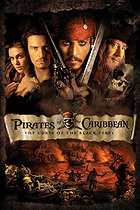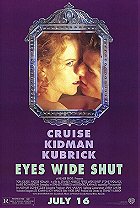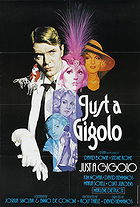After a five year dry spell, the Pirates of the Caribbean returned with a new director (Rob Marshall), two returning players (Johnny Depp and Geoffrey Rush), and minus two others (Keira Knightly and Orlando Bloom). On Stranger Tides, based on a novel by Tim Powers, is what a franchise looks like when it has stayed too long at the party.
Ironically, this is the shortest of the film’s in running time, but there’s not enough propulsive energy or fun to be found here. This makes On Stranger Tides feel like the longest of the four films. This one somehow finds the magical spot between being both over-spiced and under-cooked. Once again, there’s too much going on here, and yet not enough of it is given much thought or significant detail to work.
I never thought I’d miss Orlando Bloom, who for all of his fey mannerisms and swoon-worthy good-looks distinctly lacks charisma as an actor, as the lead of this franchise, but this one just proves that a little bit of Jack Sparrow goes a long way. With Jack Sparrow now officially leading the proceedings, there’s no one for him to bounce his inebriated logic off of, no one to act as sober counterbalance to his inanity. I knew I was going to miss Keira Knightley’s fierce and fiery Elizabeth, one of the few characters that could outmaneuver Jack and get respect from him. The film needed a straight man for him to play off, and without one this just proves that too much of one note is devastating.
Here we follow Jack in his quest to find the Fountain of Youth. Barbossa, now working with the British crown (Richard Griffiths, corpulent and boorish as King George II in a glorified cameo) joins in on the journey. Blackbeard (Ian McShane, perfection in casting, underused in execution) and his daughter Angelica (Penélope Cruz, a welcome feisty presence with a thinly written role) kidnap Jack for his knowledge. And then there’s Spanish, who are only vaguely important to the plot despite being the third corner of this triangle Jack finds himself in. Then you have to throw in a missionary (Sam Claflin, so pretty), mermaids (including Astrid Berges-Frisbey as one of our new lovebirds), and cameos from Keith Richards and Judi Dench.
Since this is the first entry to be based off a book’s plot and not borrowed imagery from the rides, there’s a distinctly off-key feeling throughout. Much like the Marx Brothers in Room Service was deeply unexciting for the way it forced screen personalities into a story that wasn’t built around them, On Stranger Tides feels like a patchwork event. The romances, both of them, are ineffective for the ways they’re underwritten, and despite McShane gloriously chewing scenery and capable of projecting menace with but a glance, Blackbeard doesn’t linger in the imagination like Bill Nighy’s Davy Jones. There’s just not enough for him to spin into gold despite how game he seems.
Wasting McShane is a cinematic sin, but so is the way that Gore Verbinski’s unique visuals disappear under Rob Marshall’s workman-like visuals. There’s no joy or splendor here, and many of the sequences land with a thud that no amount of gorgeous natural scenery or detailed costuming can mask. The only sequence worth its might is the mermaid attack. No kindly Ariel’s here, these mermaids are the darker brand and their scene feels like a thrilling horror movie plopped into the middle of a sleepy pirate yarn. Even worse, while At World’s End closed with a sense of a completed story, On Stranger Tides ends openly with the possibility of another sequel. It’s called Dead Men Tell No Tales, and it comes out in 2017. Yo ho, please end this franchise already.
 Login
Login
 Home
Home 95 Lists
95 Lists 1531 Reviews
1531 Reviews Collections
Collections
 0 comments,
0 comments, 







